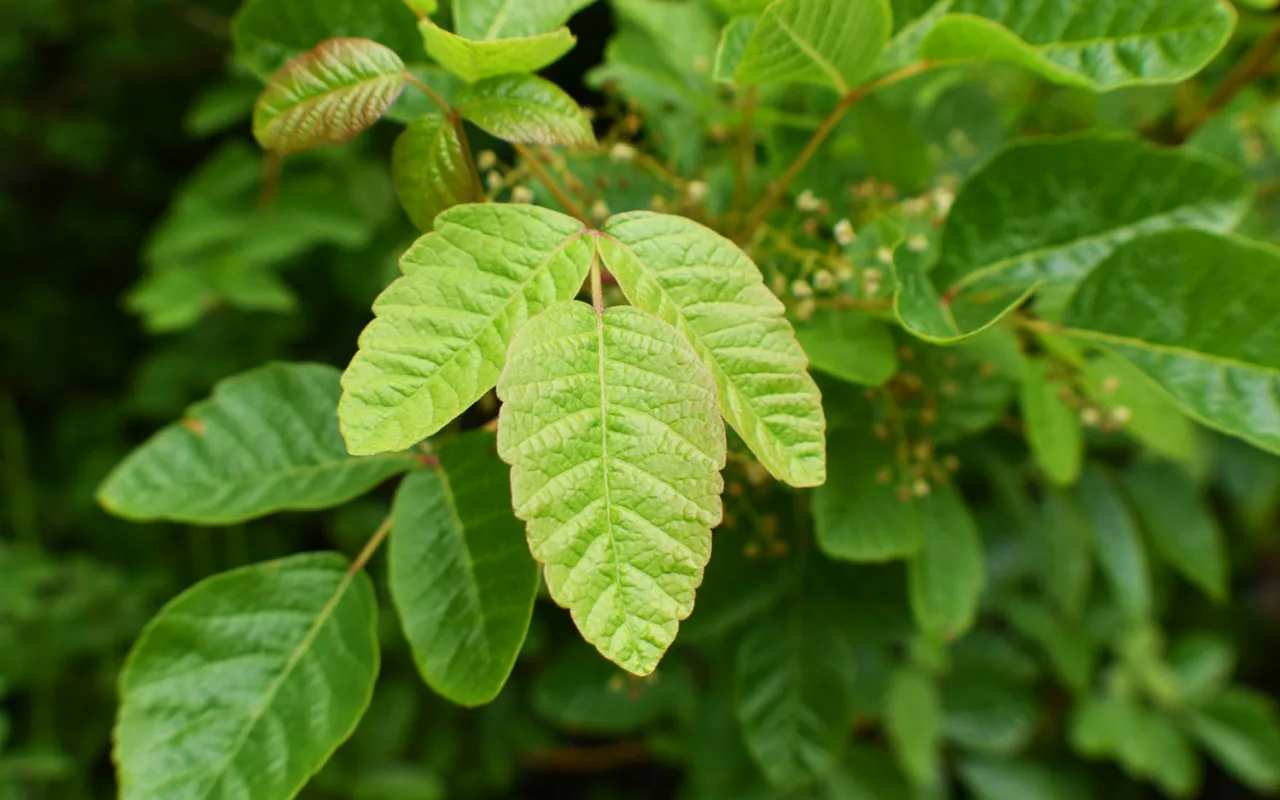
Written by s • Getting Rid Of Poison Ivy
When you’ve put a lot of effort into getting your garden looking just the way you want, any weed is an unwelcome guest. Poison ivy goes well beyond that, though – it’s a genuine nuisance. It’s not that it looks bad, because it can actually be a quite attractive plant, but any contact with it will cause an irritating and often painful rash. If it gets a foothold on your property, and it’s growing somewhere people could come into contact with it, you should get rid of it as fast as you can. The longer you leave it the more difficult it’s going to be.
Poison ivy isn’t a true ivy, but it can look like one. In the South and up the East Coast it grows as a shrub, but as you move north and west it starts to look like a vine. Wherever it is it can be recognized by its glossy leaves, which each have three almond-shaped lobes; they start off light green then darken as they age. In fall the leaves turn bright red, which may increase the risk of children touching them. The problem is the poison ivy’s sap contains an oily substance called urushiol, which is a potent irritant, and every part of the plant can bring on a rash. In extreme cases it can cause agonizing blisters, so every gardener needs to be able to recognize it – and remove it.
Removing poison ivy is complicated by the urushiol, which tends to get spread around when you’re disposing of the plant. Don’t attempt it without proper protective clothing. At a minimum you should wear overalls (disposable ones are good), gloves, goggles and a dust mask. Ideally cover all exposed skin and ensure you have nose and mouth protection, to avoid inhaling any droplets.
The simplest way to get rid of poison ivy is to pull it out by the roots. This works well if you catch it while it’s small, but if the plant is larger it will often regrow from the roots; you might need to repeat the process several times. An alternative is to smother the plant. Cut it off as close to the ground as possible, then cover the area over the roots with a dark plastic tarp or old carpet; shut out as much light and air as you can, and that should kill the roots. If new growth appears, then dies, it’s probably been effective. If the plant can’t be completely cut back you can also wrap what remains in black plastic until it dies. Small bushes may be killed by pulling a black garbage bag down over them and fastening the neck around the stem.
If removing the roots or smothering doesn’t work you might have to use chemical methods. There are traditional, environmentally safe solutions for this. One is to mix three pounds of salt and a quarter cup of dish soap into a gallon of water; spray the mixture on the plant. An alternative recipe is a pound of salt in a gallon of vinegar with a few drops of dish soap. Either mix will kill any plant, so make sure you only soak your target. It might take several doses to finish the job, and try to do it on a dry day – rain will wash the mixture off before it takes effect, and can also wash it onto plants you’d rather keep. Once the poison ivy dies dig it out by the roots.
Really stubborn cases might need a chemical pesticide. Round-Up is controversial but effective; so is Brush-B-Gon. Both can be sprayed on poison ivy but, if the wine is growing on a tree, they can also be painted directly onto it. Again they’ll kill other plants too, so need to be applied carefully.
Once the poison ivy is out of the ground, even if it’s dead, it has to be disposed of carefully – the urushiol is still present in the dead plant. The best way is to bag it securely and take it to the dump or put it out with the trash. Don’t mix it in with other garden rubbish or compost it. Never burn poison ivy – inhaling the smoke can cause serious long problems.
Finally, if you find poison ivy in a part of your yard where nobody’s likely to contact it, consider leaving it alone. It’s a nuisance to humans but has an important role in nature. Many birds and animals, including deer, eat it; smaller creatures make their homes in it. Get rid of it if it’s going to be a hazard, but that’s not always required.





